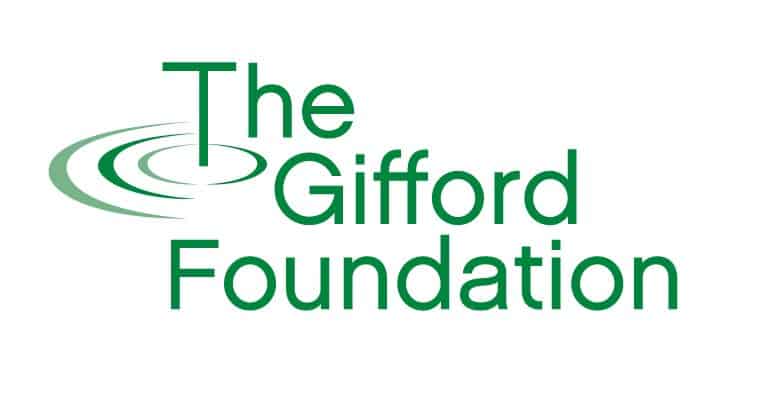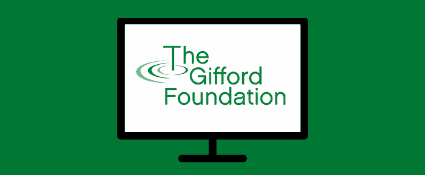Using Art to Teach Capacity Building
Published: February 1st, 2021
In November of 2020, The Gifford Foundation together with the CNY Community Foundation invited Abby Wilkymacky and Kim Larkin to host a three-part Digital Collaboration workshop for nonprofit organizations in Central New York. Held virtually, these sessions were designed to teach participants how to smooth the transition to remote work, host more constructive meetings, and reimagine the traditional processes behind brainstorming and goal setting. The primary avenue through which Wilkymacky and Larkin taught these sessions was one that many participants were not expecting: the arts.
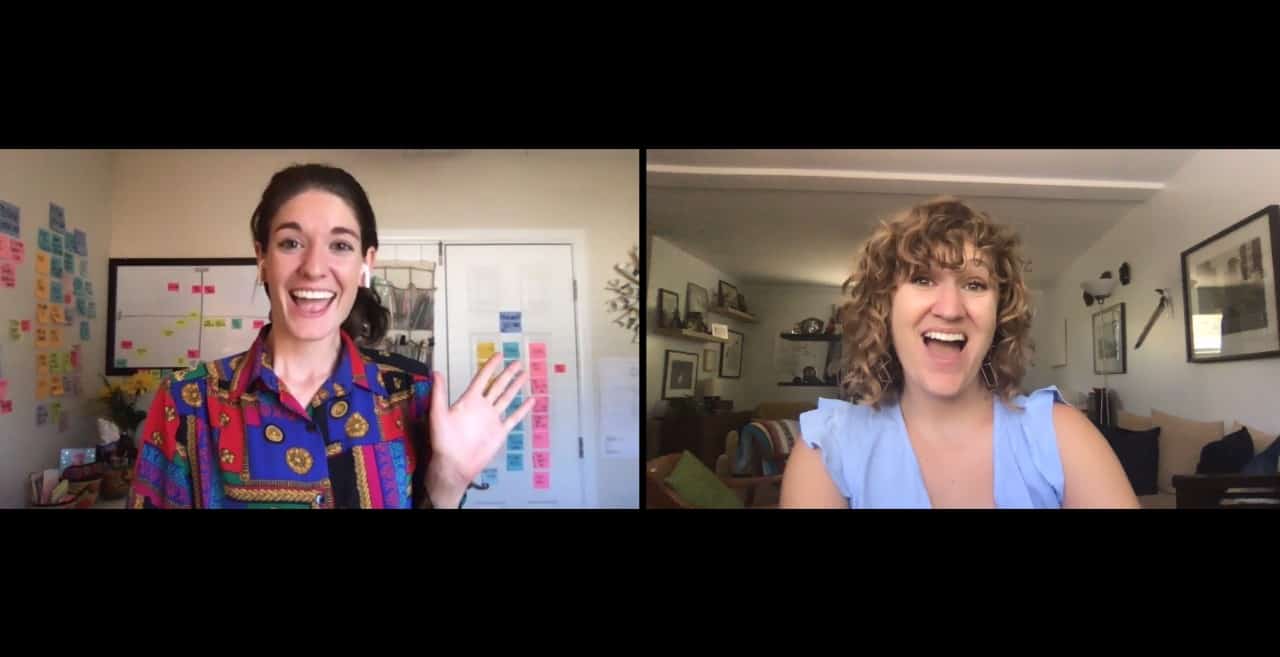
Abby Wilkymacky (Mindflower Studio) and Kim Larkin (MXDArts) each operate their own consulting businesses, but collaborate frequently. The common thread connecting their approach? Using the arts to teach leadership development and capacity building.
Abby Wilkymacky comes from an industrial design background and is the Founder of Mindflower Studio – a consulting company based in Phoenix, Arizona. Kim Larkin also comes from an arts background with an M.A. in Arts Management. Her consulting company, MXDArts, is also based in Phoenix. The two work together frequently and boast an impressive client history that includes Fortune 100 and 500 companies. Driving their collaboration is a shared belief that many businesses and nonprofits alike are held back by an overly sterile and robotic planning structure. “We are working on how to take a strategic plan and make it visual and memorable,” says Kim. “Less like a business document, and more like a story that helps people want to achieve what they’ve discussed and get to that end vision.”
Businesses and organizations alike are working harder than ever to reimagine how they express their mission and values, and there is a growing expectation that empathy and human centeredness will be a part of their identity – no matter the brand. Wilkymacky and Larkin find that the arts are a powerful resource for helping teach the meaning of empathy and how to practice it. “Empathy is not designing for people, but designing with them,” says Wilkymacky. This emphasis on the process rather than just focusing on the product is a major part of how they teach.
By incorporating visuals, roleplaying, storytelling, and other exercises into their workshops, they help people have novel experiences and push their thinking to a new level. “We get pushback from clients who say, ‘we already know that stuff’,” says Larkin, “but when we ask, ‘what is your mission/vision/values?’ they say ‘Oh, it’s written on the website somewhere.’ But if that’s not at the forefront to how you are doing your work, you aren’t doing your best job of serving your community.”
(Article continues below)

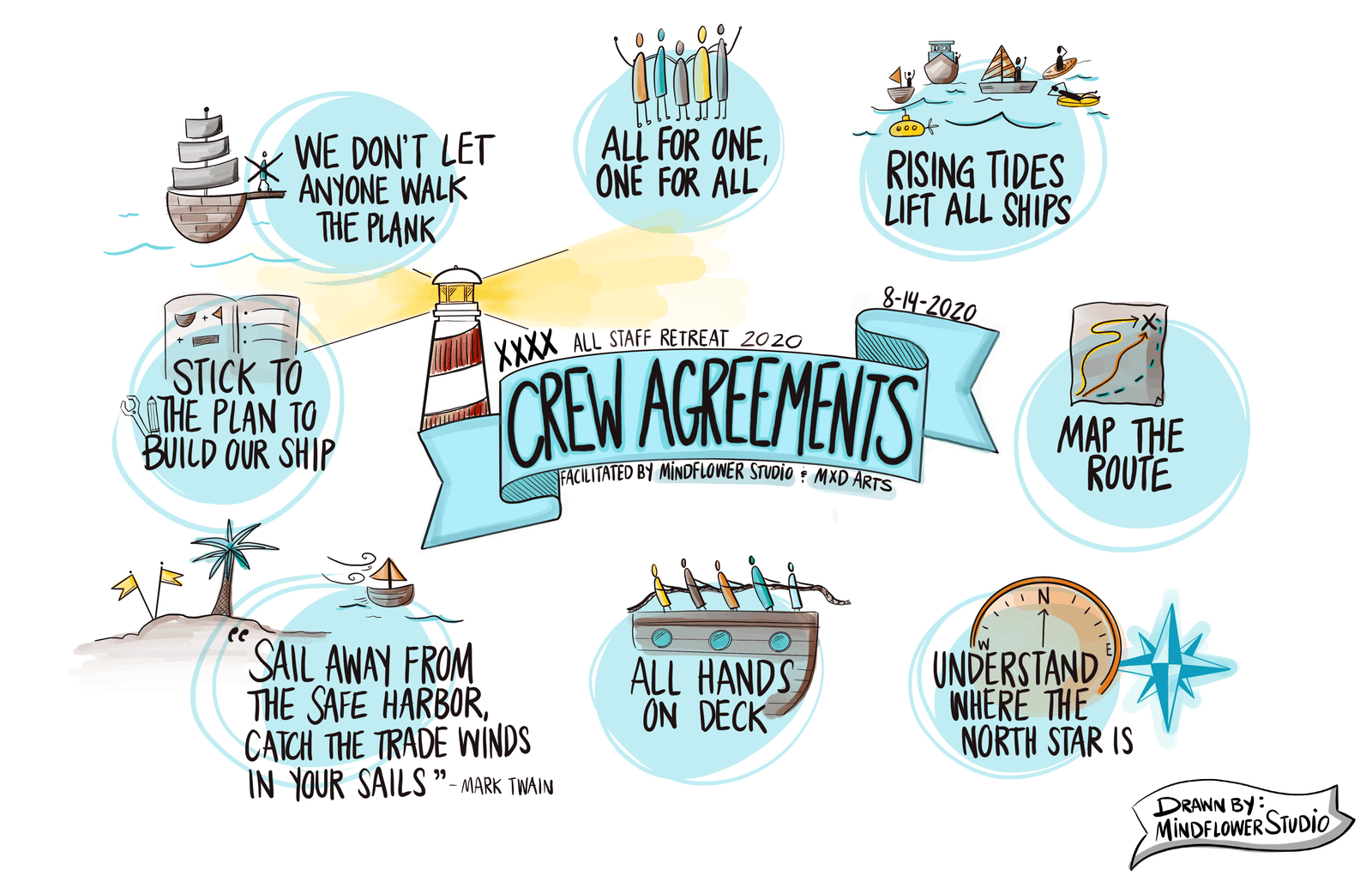
Drawn in real-time during a brainstorming session, Wilkymacky created a visual guide to help her client visualize their goals, values, and principles.
Often, Wilkymacky develops diagrams and illustrations in real-time while the workshop is underway. During a staff retreat for a local community alliance, Larkin and Wilkymacky worked together using a nautical theme and lots of visuals. “We started off by graphically facilitating a “draw-along” exercise that gave everyone time to reflect on the past year of their personal and professional lives,” says Wilkymacky. After some guided group discussions and digital training, they had the employees develop their own “Crew Agreements” which helped establish a common ground of defined goals, values, and principles. While Larkin facilitated the “Crew Agreements” conversation, Wilkymacky drew the results. At the end, the team was presented with a visual version of their “Crew Agreements” that they can bring into every meeting or workshop to set the tone for a collaborative environment.
Organizations who have worked with The Gifford Foundation in the past will be familiar with the “Tabletop” model from the Nonprofit Lifecycles Institute. Used as a way to help nonprofits visualize the components of a successful, stable organization, it shows a table with four legs representing Management, Governance, Business Model, and Administrative Systems. If one of these is underdeveloped, the structure becomes unstable or “wobbly”. Though it is not one of their designs, Larkin and Wilkymacky point out that the success of this capacity building model comes from the creative and visual way that the information is presented. If the same principles were taught simply as “The Four Components of a Stable Nonprofit”, it would be far less memorable or coherent. “It comes down to helping people see what they might not otherwise be able to,” says Wilkymacky.
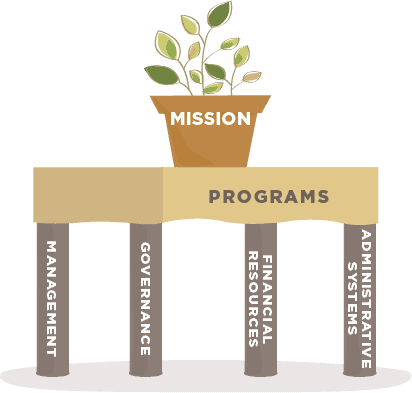
The Nonprofit Lifecycles Institute’s table leg analogy helps organizations visualize and assess their structure.
Too often, art is seen as an undisciplined, free flowing pursuit that has little relevance to the business or nonprofit management world. The workshops led by Wilkymacky and Larkin served as an important reminder that that the lines are much more blurred. Not only are the arts considerably more disciplined than many people realize, but visual and creative thinking also play major roles in other pursuits. Appreciating this can help create novel experiences and thought processes that might otherwise be left unrealized. Productivity aside, Larkin reminds clients that it is also a more enjoyable methodology: “We can do serious work while having fun doing it.”
Subscribe to the Gifford Newsletter
Start enjoying our free quarterly publication today.
